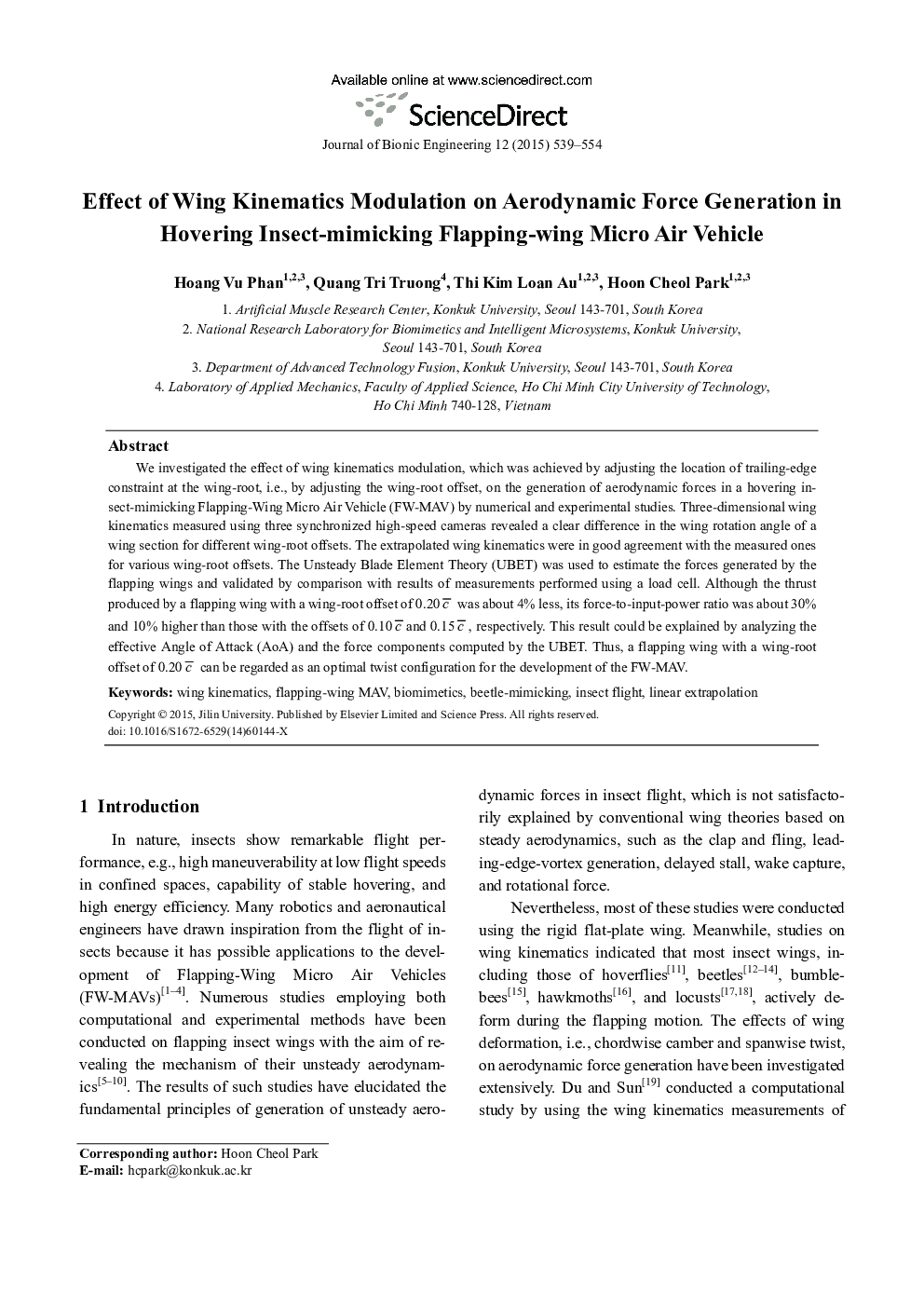| Article ID | Journal | Published Year | Pages | File Type |
|---|---|---|---|---|
| 826611 | Journal of Bionic Engineering | 2015 | 16 Pages |
We investigated the effect of wing kinematics modulation, which was achieved by adjusting the location of trailing-edge constraint at the wing-root, i.e., by adjusting the wing-root offset, on the generation of aerodynamic forces in a hovering insect-mimicking Flapping-Wing Micro Air Vehicle (FW-MAV) by numerical and experimental studies. Three-dimensional wing kinematics measured using three synchronized high-speed cameras revealed a clear difference in the wing rotation angle of a wing section for different wing-root offsets. The extrapolated wing kinematics were in good agreement with the measured ones for various wing-root offsets. The Unsteady Blade Element Theory (UBET) was used to estimate the forces generated by the flapping wings and validated by comparison with results of measurements performed using a load cell. Although the thrust produced by a flapping wing with a wing-root offset of 0.20 was about 4% less, its force-to-input-power ratio was about 30% and 10% higher than those with the offsets of 0.10 and 0.15 , respectively. This result could be explained by analyzing the effective Angle of Attack (AoA) and the force components computed by the UBET. Thus, a flapping wing with a wing-root offset of 0.20 ; can be regarded as an optimal twist configuration for the development of the FW-MAV.
